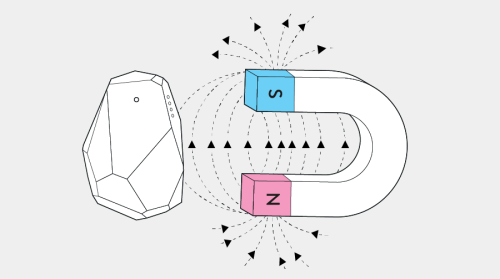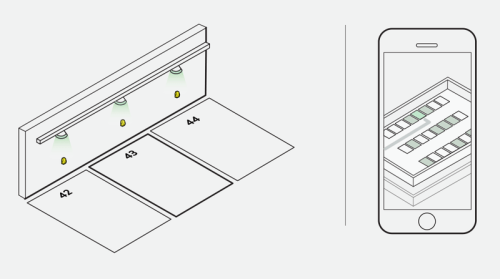Parked car detection made easy — magnetometer support in Estimote Beacons
We think of Estimote Beacons as the building blocks of physical location intelligence. We put a lot of stock in sensors that collect relevant ambient information for their surroundings. These sensors are the cornerstones of data driven decisions for intelligent indoor spaces. One of these sensors is a magnetometer, which enables some very interesting use cases.

On one level, having a magnetometer means you can easily check if the beacon is installed properly — many sources of interference will also impact the magnetic field around the beacon. You can leverage this sensor for a smoother, more reliable deployment. In addition, you can also use the ambient magnetic fields to record a “fingerprint” of the location, making sure it can’t be spoofed, and adding another layer of sensors to your intelligent location arsenal.
For a while now, Estimote Location Beacons have had magnetometers installed. We’ve included magnetometer readings in our Estimote Telemetry packet due to popular demand, but we haven’t really put that feature in the spotlight before. It’s time to change that.
What is a magnetometer?
A magnetometer is a device that can measure changes in the magnetic field. It can be easily used as magnetic metal detector. The appearance of a chunk of magnetic material nearby is one of the most common reasons for changes in the magnetic field. Why a “magnetic metal,” and not just any metal, like with a metal detector? Magnetometers are different from metal detectors, since the latter can detect all metals — while magnetometers can only detect a special group of metals (i.e. magnetic metals) such as iron, nickel, cobalt, or their alloys, like steel.
Some of the larger-scale applications for magnetometers include searching for sunken ships, submarines, or underground structures — useful for those of you with archeological inclinations! Most of us probably won’t be diving for doubloons, though. If you set out north to watch the northern lights, though, magnetometers can be used to detect indications of auroral activity before the actual light show begins. In spacecraft, one of the more common uses for magnetometers is altitude sensing. Closer to home, magnetometers are also sometimes used in airports to scan for concealed weapons.
A big difference between a magnetometer and a metal detector is the scope: detectors typically have a shorter range, while magnetometers can detect large magnetic objects from several dozen feet away. The question “What’s a large object made of iron or steel that I might want to detect from quite far away?” has at least one pretty obvious answer.
Real-world uses for magnetometers
There are several, but one of the more interesting ones is very relevant in today’s world. Magnetometers are commonly used to detect the presence of cars. Some of the specific applications here include counting free spaces in car parks, measuring traffic loads by counting the number of cars passing on a given fragment of the road, creating adaptive traffic lights, and more.
Let’s imagine a multi-floor car park with hundreds of parking spaces. When you’re desperately trying to find a free space to make it in time for the movie, wouldn’t it be cool to be able to quickly find a spot? If you have beacons placed in each of the parking spaces, they can detect if a car is occupying that space or not, and send that data to a server that can then feed your phone (or the digital display in the parking lot) data on how many free spaces there are, and where to find them.

An added bonus? No cables, no complex installation procedures, and no need for multiple “gateways” for the beacons to send their data to the web. All it takes is one person with a phone.
How can you start using it?
With Estimote beacons, you get this type of sensor right in the palm of your hand (or on your wall, as the case may be). We know you can use it to make amazing things.
Location Beacon’s magnetometers provide you with raw readings from the sensor. You can use our iOS and Android SDKs (starting with version 4.5 and 1.0.0, respectively) to get a reading from the magnetometer in the Estimote Telemetry packet. This will provide you with the values for x, y, and z axis, corresponding to three-dimensional coordinates. For best results, you should measure the values on site, where you want to deploy the beacon (bear in mind that the results may be impacted by magnetic objects in the vicinity — even your car on the other side of the wall can change the readings).
In essence, though, this means you only need to have an app you build for this purpose running on a device somewhere in the beacon’s range to know exactly when — and for how long — a car has been in the vicinity of the beacon. That said, the beacons aren’t calibrated — don’t use them as compasses and make sure you offset each beacon’s readings individually.
Here’s how you can read that data using our Android SDK
And our iOS SDK
Grab yourself a couple of Location Beacons — and now you’re ready to go out and find some buried treasure (provided they’re big enough)!

Rafał Ociepa, Community Manager at Estimote
Marcin Klimek, Product Manager at Estimote
